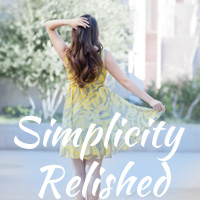I’ve been championing simplicity on this blog for about a year now. It started last fall when I came across Courtney Carver’s Project 333— a capsule wardrobe challenge that has now become a near-mainstream trend– and I took it upon myself to find additional ways to simplify my life.
I’ll be honest. I did it in part because I was intrigued by the subject, and there was already a vibrant tribe of writers I could jump right into. It also helped me focus my blog on a specific topic while in the midst of moving across the country, getting married, and becoming (more) in charge of my resources.
Simple living has become a trend in this past year– the more I wrote about it, the more I realized that others were doing the same. And now that Marie Kondo’s book, The Life-Changing Magic of Tidying Up, is a national bestseller, it seems everyone is on the simple living boat.
(via Conde Nast // purchase this print here)
As the artist above has implicated (as well as this op-ed in the New York Times), so much of the focus of simple living movement has been about de-cluttering. Get rid of this, stop buying that– buy this so that you can stop buying that– throw this away so you can get that.
But the truth is, that’s the easy part when it comes to simple living. The hard part is explaining why.
Here’s the problem: so often the proponents of minimalism, essentialism, simple living, intention setting– whatever term we might prefer– are so wrapped up in the losing that they don’t focus on the gains.
What are the gains, anyway, and why don’t we talk about that more?
It’s probably because so many of us don’t even know. We love the idea of intention, of simplifying, of less-is-more mentality. But although it’s easy for us to define that less, many of us can’t name the more.
We don’t know what it is we want in the long-term. Do we want to be more generous? Do we want to be more accomplished? Do we want to have more time for our friends?
Committing to any those things means hard work. It’s relatively easy to go through our closets and get rid of clothes we don’t love. The challenge is actually having the courage to change the way we live, not just how we dress or shop.
What actually changes lives
When someone says that simplicity has truly changed their life, this is what I hear: I simplified my life in order to focus on things I identified as more important.
But are you familiar with the adage, “You can lead a horse to water but you can’t make it drink”? So often we lead ourselves straight to that water: we declutter, we cut back, we spend less time poring over catalogues and organizing our things. But we’re not drinking from the clear, refreshing streams of a purpose-driven life yet. We’re still sitting on the banks wondering, What is this water going to taste like?
If you’ve ever worked in an industry or ministry geared towards life transformation– true, utter transformation– then you know that it often has very little to do with material possessions. It may start there, but it doesn’t end there. It ends in that person finding her reason to live. It ends in that person being brave enough to pursue his purpose.
Related: Lessons I learned from working in addiction recovery
The proof is in the purpose
There’s nothing magical about getting rid of stuff. There’s nothing magical about capsule wardrobes, capsule kitchens, no-spend months, shopping bans, and the like.
If there’s any magic at all, it’s the moment when people come alive to their purpose. It’s when healed people become healers. It’s broken people being made whole. It’s when all the evil of the world is turned upside down, second chances are given, and despair is turned to hope.
Simple living can help us get there, but first we have to decide where exactly we want to go.



